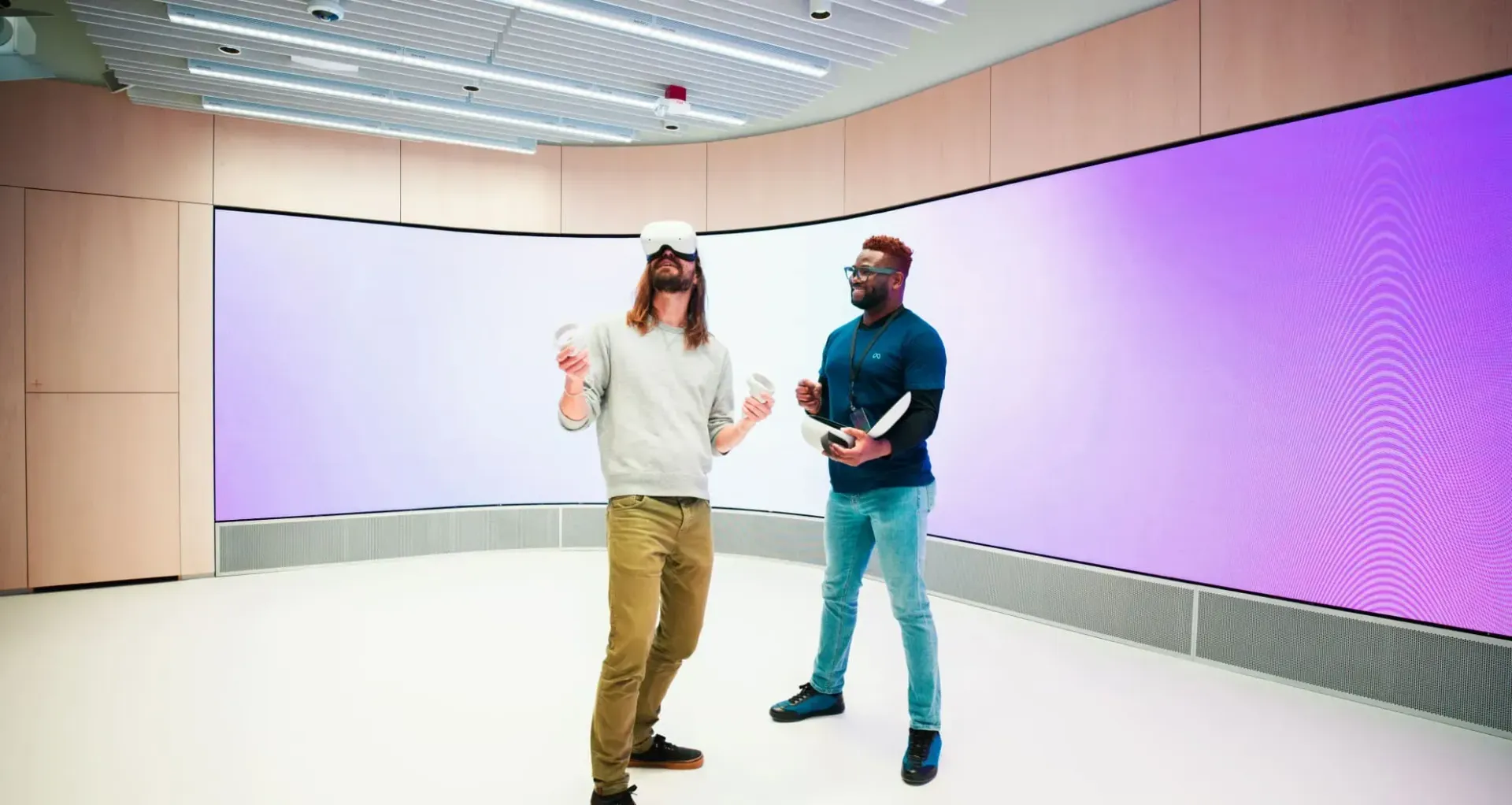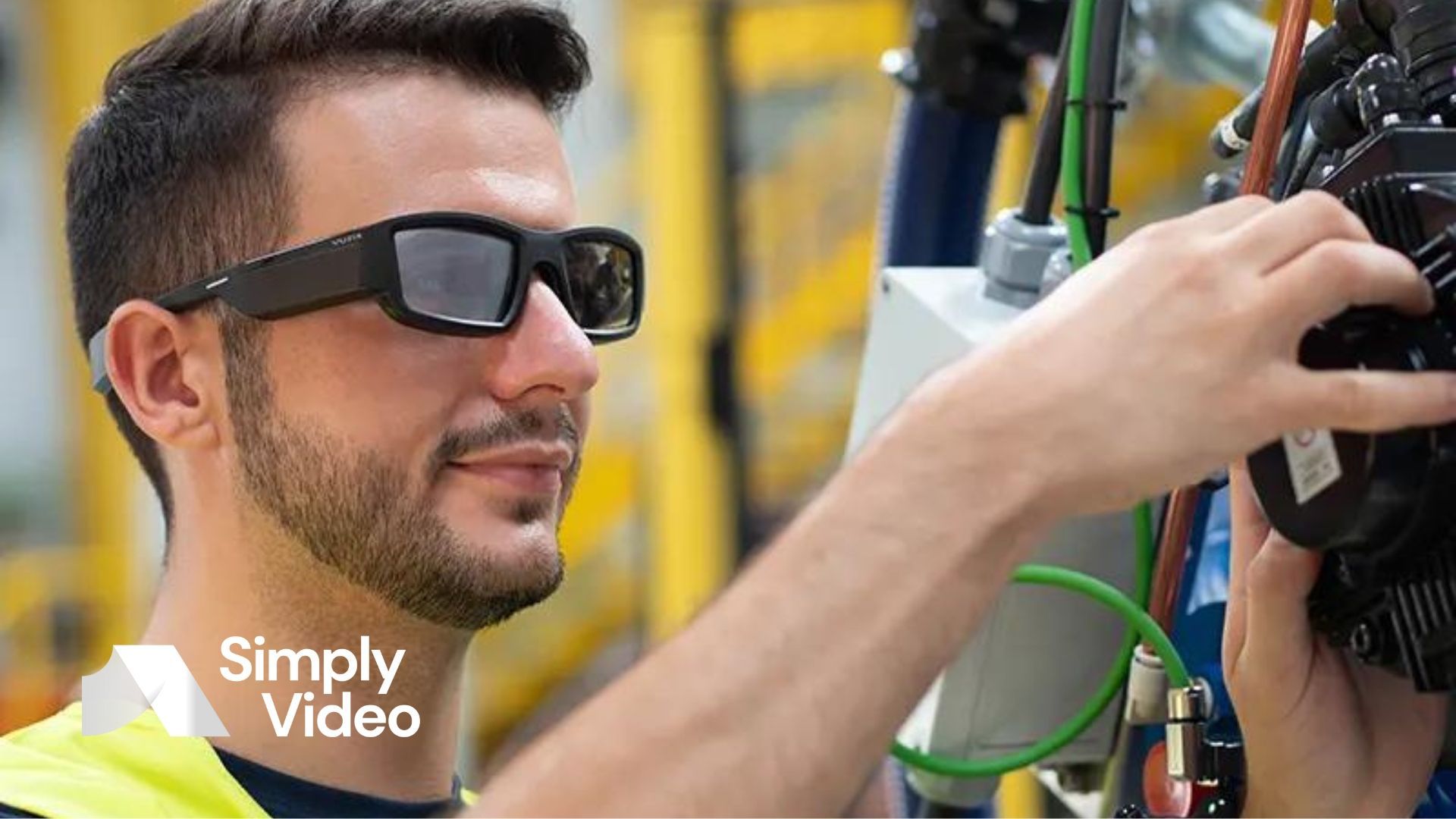3 use cases for low-bandwidth video streaming
SimplyVideo, an XR video app, is built to perform beautifully in low-bandwidth situations. Learn 3 ways this can save time and money – or even save lives.

If you've followed our blog posts, you'll know about the cool, XR-friendly features that SimplyVideo has up its sleeve.
We're talking about things like Chat 4.0, which lets you share
annotated screenshots between XR users and remote workers. And 3D asset visualisation, which supercharges design cycles by letting you inspect 3D CAD models as if they were right there in the room.
But behind the scenes, there's a hidden feature that might be even more useful: low-bandwidth streaming.
In short, this means you can take part in high-quality video calls – even if you're relying on a spotty mobile internet connection. Useful, right?
What does it all mean?
Our low-bandwidth streaming feature relies on some very clever techniques. This includes things like load balancing and architectural tweaks.
Honestly, it's super-deep stuff that will probably only interest the proudest tech geeks.
Nothing wrong with that – we're tech geeks ourselves. However, this isn't the time or the blog post for a deep dive into bandwidth optimisation.
For now, all you need to know is this: if your network has low bandwidth, it means you can't transmit as much data simultaneously.
It's a little like the difference between a two-lane country road and a six-lane motorway. If you need to send 500 cars to a destination, they're going to get there much faster on the motorway – simply because there's more road space to use.
Lots of things can cause low bandwidth. It could be that too many people are connected to your network since bandwidth is shared – like a delicious digital pie – between all network users. Or it could simply be because your internet connection can't muster much bandwidth. Mobile broadband, for instance, usually provides lower bandwidth than fixed-line internet connections.
The trouble is that the users who could benefit most from XR are often stuck with these low-bandwidth internet connections. After all, it's hard to deliver high-speed, fixed-line broadband to a temporary drilling site or to paramedics out in the field.
To compound the problem, traditional videoconferencing apps typically demand bags of bandwidth. They need to send high-quality video back and forth – and they need to do it pretty much in real-time.
That's why we designed SimplyVideo – from the ground up – to work in low-bandwidth environments. As an XR-first video collaboration solution, it has to deliver consistent, reliable results in the kinds of situations where XR is actually used.
What kinds of situations? Try these on for size.
How can organisations harness low-bandwidth streaming?
1. Remote assistance in healthcare
A whole lot of life-saving care is administered outside of hospitals and GP surgeries. This includes paramedics responding to emergency calls, as well as home healthcare providers and military physicians, among others.
Now, don't get us wrong. These workers are highly trained professionals who typically enjoy a high level of autonomy. Paramedics in the UK, for instance, have to complete a tough three- or four-year degree – and, once qualified, can deliver critical care such as advanced life support.
But that doesn't mean frontline health workers always have the answers. And it's those novel, "what-next?" situations where XR technology could prove most useful.
Paramedics equipped with assisted reality (aR) headsets could stream real-time, "see-what-I-see" video to a remote healthcare expert. With a clear view of the situation, this expert could deliver instant – and potentially lifesaving – advice, step by crucial step.
Of course, in a critical care scenario, the last thing you want is to suffer video dropouts. Many traditional video apps couldn't cut it, but SimplyVideo's low-bandwidth streaming capabilities maximise your chances of a smooth connection when it's most needed.
2. Training in remote environments
Let's say you're an engineer on an oil rig. You're tasked with training a group of rookies.
In the dark days before XR, your only options would be:
- To fly the trainees to site. However, they're not used to the harsh and sometimes cramped environments on board the rig. Thus, not only is this option expensive, but it's also slow – you can't safely cram 20 students into a corridor while you demonstrate a piece of machinery, after all.
- To deliver the training on land. Doing it this way is safer and means you can accommodate more students. However, it also makes for a poor facsimile of the real thing. They can work on a training model, but they can't get a feel for the true challenges of offshore engineering work.
Now let's say you've considered using XR, but you've hesitated because the rig's WiFi is shonky. Again, SimplyVideo can come to the rescue.
Using the SimplyVideo app on an aR headset, you can deliver training exercises as POV video streams, even if your connection can't usually cope with video.
Students can dial into the call from any device – and from the comfort of their homes. They'll gain a deep understanding of real-life conditions and your employer won't have to pay to fly them over. Win-win.
Bonus: using XR and SimplyVideo means you can deliver training to anyone, anywhere. It doesn't matter if your trainees are in Doncaster or Dongguan – they'll enjoy the same "see-what-I-see" training experience.
3. Site surveys by drone
It's not just XR devices that benefit from SimplyVideo's bandwidth savings. Drones do too.
That's right. Thanks to SimplyVideo's drone integration, you can stream smooth flight footage as it happens – and over almost any mobile internet connection.
This has many potential applications. So many, in fact, that we wrote a whole blog post about it.
So check that out if you want to deep dive into the subject.
For now, let's focus on one particular use case: site surveys for construction projects.
Conducting site surveys means gathering lots of data. You need to know about soil types, topography, drainage, the heights and positions of surrounding buildings… the list goes on.
Drones can be invaluable in gathering some of this data. But it's not always a one-and-done operation. Colleagues can't view the drone footage as it happens, so mistakes can only be corrected by sending the drone operator back to site for another flight. This is, to say the least, costly and disruptive.
But with SimplyVideo and a mobile internet connection, you can turn every flight into a real-time collaboration. The drone operator can stream footage direct to their colleagues back at base – just as if the drone was a participant in the video meeting.
Critical discussions can happen at the best possible time – while the drone's airborne. This means mistakes can be corrected before they happen, maximising cost savings and minimising disruption.
Plus, that poor drone operator can rest easy knowing they won't have to make the trip back to site. (You can thank us later.)
Want to learn more about how SimplyVideo can level up your XR deployment?
Read about its XR video features today – or
sign up for a free 30-day trial.












